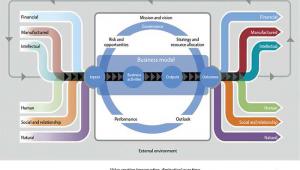By Peter Fleming | 1 October 2012
Shared services cannot compensate for 28% cuts to local government grants. But they can help break down silos and deliver more seamless outcomes to the public

For those of us working in the sometimes prosaic world of productivity – spending our time poring over spreadsheets, crunching the numbers, and sweating over the impact of our decisions on workforce morale and service provision – it can be somewhat bewildering to look up and find our work punted into the political arena.
Of course, how public money is spent is at the heart of every political debate. But in the post-credit-crunch world of public sector austerity, the pitch and tenor of the debate has heightened to the point where discussing the scope of things like shared services has become an almost overtly political act, fraught with snares and pitfalls.
Local government has been subjected to some frankly outlandish claims on the scale of savings that can be made through sharing services and collective procurement. Last year, a consultancy gained some handsome press coverage by claiming councils could save £10bn a year by trimming the fat from costs such as phone contracts and legal services. If only we could.
The situation hasn’t been helped by the fact that crying ‘inefficient’ is a convenient way of attempting to shift the blame for the inevitable consequences of cutting local government funding. It is pretence to claim that the £6.5bn cut from government grants (28% in real terms) can be made up through improved efficiency and productivity with no impact on services, but that still doesn’t stop people from saying it.
Of course, Whitehall isn’t immune to roughing up of this kind. Earlier in the year, the Public Accounts Committee found that the shared-service centres set up by government departments failed to deliver the savings they should have. They cost £1.4bn to set up – £500m more than expected – and in some cases, actually cost the taxpayer more than they saved.
It is tempting – given the endless stream of frequently unjustified criticism of local government efficiency – to use this information to fire a broadside at Whitehall. It would highlight central government’s poor performance in contrast to the more than 200 examples of shared services councils have already effected across the country.
But, ultimately, that would only add fuel to the fire for those keen to portray the public sector as profligate. It would also dismiss the hard work that is being done in this area right across the public sector. Above all, it would falsely portray sharing services as an easy process where you just sack half the managers, merge the services, bank the savings and move on to the next department.
It says a lot about the state of the current debate that it feels a slightly dangerous practice to admit local government is capable of doing things better. And every time we produce a report examining the feasibility of consolidating assets or sharing front- and back-office services, there is a tingle of fear that it will be used as a stick to beat the sector with.
It’s all too easy to multiply the savings produced in one or two councils by the total number of local authorities and claim the result as the saving the sector should be making as a whole. But this is as if the issues of politics, demographics, geography, employee relations and differing workplace cultures didn’t exist.
Furthermore, this attitude misses the point that delivering public services is not an exact science. The difficulty of experimenting with the means of service delivery is that the outcomes can be detrimental to the local people we are here to serve, which requires a considered and cautious approach.
A report carried out for the Local Government Association by advisers Drummond MacFarlane, Services shared: costs spared?, provides a detailed analysis of five shared-service arrangements. Rather than producing yet more guidance, the LGA is keen, four or five years on from the advent of shared services, to focus on of what members have achieved. The research aimed to provide evidence and answers to the questions: Do shared services work? Can they save money? Do they perform better?
The report provides a detailed insight into the scale of savings that have been achieved through sharing back-office functions such as IT and legal, and teaming up to deliver frontline services such as waste disposal and road maintenance. It reveals that clear financial benefits have been achieved, with the five shared services saving £30m between them through reducing staff (removing duplication and management posts), integrating IT, reducing accommodation and improving procurement.
In general, the set-up and integration costs for merging services proved to be modest, with less than a two-year payback period for all the services analysed. The shared services also succeeded in providing the same or better levels of performance at less cost. The initial benefits were typically achieved rapidly. But as arrangements matured and evolved, they started to produce savings in new areas, such as through better use of IT and assets, improved processes and cultural change programmes.
The findings were impressive, but unsurprising, as we knew anecdotally that the more than 200 shared-service arrangements in local government were saving council taxpayers a lot of money. The report’s aim, however, is to prompt greater exploration, and for central government and other parts of the public sector to follow this lead.
Alongside the report, an evaluation model has been launched to help councils understand and track the benefits of sharing front- and back-office services. It can be used to help make decisions on whether to set up a shared service or to manage progress on one that has already been established.
The model does not replace detailed financial planning, but is focused on supporting overview and scrutiny of committees and helping members and senior management to make decisions and track the benefits of any changes.
The unfortunate reality of the current economic climate is that for the public sector, austerity has set in for the short to medium term. Ministers have already signalled that deeper cuts are to come. In local government, which so far has disproportionately borne the brunt of the cuts to the public purse, this news has been met with shudders of trepidation.
When it comes to managing cuts in funding, we know that if we perform well, even more will be expected. If we perform badly, even more will be expected. In this respect, we’re subjected to something like a Morton’s Fork situation – named after Henry VII’s tax collector, John Morton, who declared that a man living modestly must be saving money and could therefore afford taxes, whereas if he were living extravagantly, he was obviously rich and could still afford to pay them.
The result of this is that in order to shield frontline services from the impact of deeper cuts, we must continue to innovate. And while there are definitely savings to be made by local authorities through closer working with one another, the greatest savings can be made through developing a closer working relationship across the entire public sector in the big service-delivery areas.
Using Community Budgets, local authorities have demonstrated how a co-ordinated, multi-agency approach to troubled families can improve outcomes and reduce costs. It has long been recognised that tightening the relationship between public health, adult social care and health care providers can save money while helping the vulnerable and those at risk of serious illness enjoy a better quality of life. Our report contains an excellent example of how the gaps between councils and the NHS can be closed to the benefit of residents and the bottom line.
Examples of restrictive silo working are rife across the entire public service, with numerous barriers between local government, the NHS and government departments. Tearing down the barriers will be one of the next big challenges as public sector funding tightens. We need to look to each other to share office space, customer service facilities, back-office functions and, ultimately, budgets.
The lesson to be learned from our report is that sharing services is not an end in itself. Efficiency and innovation represent a journey, rather than a destination. As soon as you think you’ve arrived, you have to set off again. That is the nature of public services.
Peter Fleming is chair of the Local Government Association improvement board. The Services shared: costs spared? report is available on the LGA website www.local.gov.uk


















